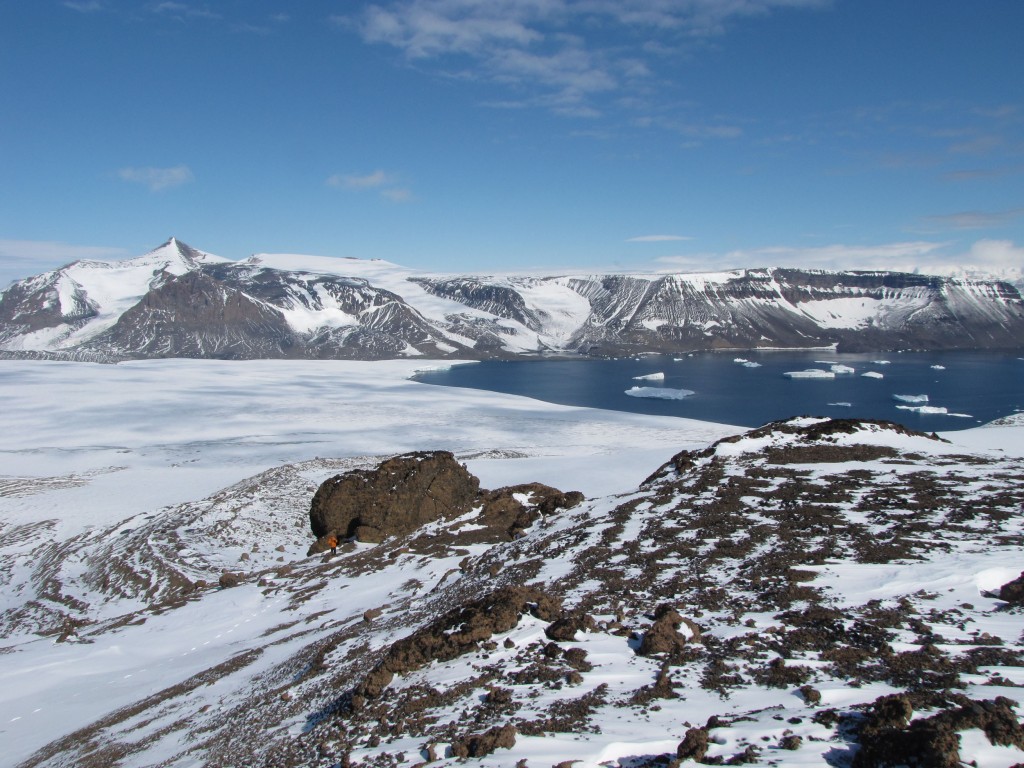What is a Tidewater Glacier?
Tidewater glaciers are glaciers which extend out, and terminate into the sea [1]. They are part of a group of glaciers known as calving glaciers, as their main method of ice loss is through iceberg calving, instead of surface melt [1,2]. Calving icebergs currently accounts for up to 70% of the worlds annual mass transfer from glacial regions to the ocean [1].

Tidewater glaciers are found at latitudes of 45ᵒ and above, and are present in different glacial regions including Antarctica, Alaska, Greenland, Svalbard, and Patagonia [1,2].
Types of Tidewater Glacier
Mountain glaciers terminating into the ocean are called ‘tidewater glaciers’. ‘Tidewater outlet glaciers’ are glaciers which reach the ocean through fjords, branching off from ice caps, ice sheets or icefields [1].
Tidewater glaciers can either be grounded – where the glacier is in constant contact with the bed. Or they can be floating – when the terminus is floating on the sea water, or flowing into an ice shelf [1,3]. Grounded glaciers tend to be located in temperate regions such as Alaska, or Canada. And floating tidewater glaciers are commonly found in polar regions, namely Greenland, Svalbard, and Antarctica.
Tidewater Glaciers and Iceberg Calving
Calving icebergs are the most efficient method of losing mass from a glacier [4]. It is the dominant cause of mass loss from the Antarctic Ice Sheet [5], therefore, it is important to understand the process behind these calving events [1,4]
Iceberg calving occurs when there are faults in the glacier, known as crevasses. Crevasses can form when there stress and strain thresholds are reached on the glacier. The trigger for the iceberg calving events vary for both grounded and floating tidewater glaciers.

Floating tidewater glacier
For a floating tidewater glacier, submarine melting of the underside of the glacier causes a direct loss of ice, as well as undercutting the floating glacier terminus or ice shelf [6]. This causes instability, resulting in complete collapse [1,6].
When the floating section of the tidewater is removed, the ice on the land is no longer supported from the buttressing ice shelf. It is then able to rapidly, and continuously calve icebergs. For example, the Larsen B ice shelf collapse in 2002 on the Antarctic Peninsula [4].
Grounded tidewater glaciers
Grounded tidewater glaciers calve when there is either a rapid thinning of the glacier surface, or a localised change in sea level. This change forces the glacier terminus to be out of equilibrium with the ocean, resulting in the terminus to be lifted and detached from the bed, causing the terminus to become buoyant [6]. During this process, the crevasses are able to isolate large blocks of ice which are then calved into icebergs.


Actually, calving is not the primary process for ice loss at tidewater glaciers. Deep warm water causes more ice-loss than calving does IMO (https://blogdredd.blogspot.com/2022/03/antarctica-20-13.html).
“Calving icebergs currently accounts for up to 70% of the worlds annual mass transfer from glacial regions to the ocean”
Not according to Dr. Eric Rignot of NASA (Academy of Science member) see video at https://blogdredd.blogspot.com/2022/05/antarctica-20-14.html